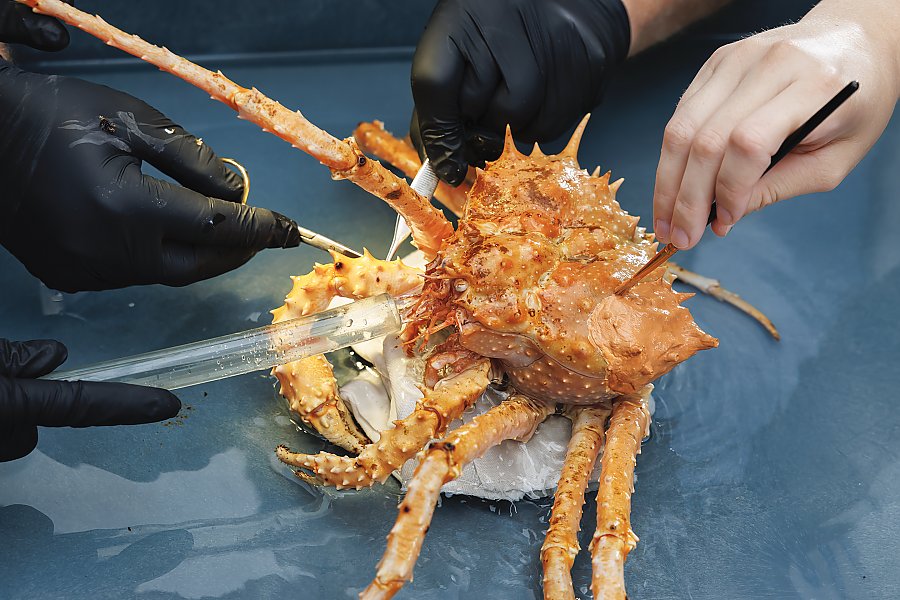
Aquarium Discounts
Aquarium coupons at Baker’s through December
An aquarist cares for crabs in need of new shells in a new, inventive way, by using non-toxic epoxy, molding, and paint.

Credit: Robin Riggs
November 21, 2024
Finding creative solutions to problems is a large part of our animal care team’s day-to-day operations at the Aquarium of the Pacific. One of these problems is present when crabs need a new shell that is not replaced by natural molting. A crab’s exoskeleton can wear down over time and become infected. This can eventually compromise the crustacean’s overall health, but the Aquarium has developed a new technique to replace the exoskeleton.
While the Aquarium’s veterinary team has tried a variety of tactics to improve shell quality through nutrition and eliminate the infection medically, a solution has yet to be found. However, Aquarium of the Pacific Director of Veterinary Services Dr. Lance Adams and Aquarist Brooke Hernandez proposed a unique idea: creating a new prosthetic exoskeleton to give the crabs at the Aquarium a new outlook on life.
The process begins with Hernandez using a series of animal-safe silicone molds to create a customized casting of the crab’s deteriorating exoskeleton. With these molds, a replica can be made of the animal’s shell. Next, the casting is ready for non-toxic paint to be applied. Through a series of trials and errors, Hernandez submerges tiles of potential colors under aquarium display lighting to ensure that the prosthetic will look seamless underwater. Once the prosthetic is perfected, Hernandez then teams up with the Aquarium’s veterinary team to begin the exoskeleton repair on the individual crab.
To begin the procedure, the crab is placed on a wet table designed for aquatic medical care and placed under anesthesia to ensure that neither the crab nor the animal husbandry team members are harmed during the process. Then, Dr. Adams begins to remove areas of the infected and deteriorating exoskeleton. With this removal, portions of the crab’s shell are taken away, exposing the animal’s soft underbody. At this point, Hernandez begins to mix a series of veterinarian-approved fast-setting adhesives for Dr. Adams to attach the prosthetic mold over the exposed portions of the animal’s body. Once the prosthetic is securely fastened to the crab, Hernandez will go in for one final touch up of any non-toxic paint or epoxies. When the procedure is complete, the crab is monitored closely and returned to its habitat to heal after waking up from anesthesia.
Though still in its early stages, this innovative procedure has already enhanced the quality of life at the Aquarium of the Pacific. This approach holds promise for the future well-being of crabs, not only at our facility but in aquariums globally.

Aquarium coupons at Baker’s through December